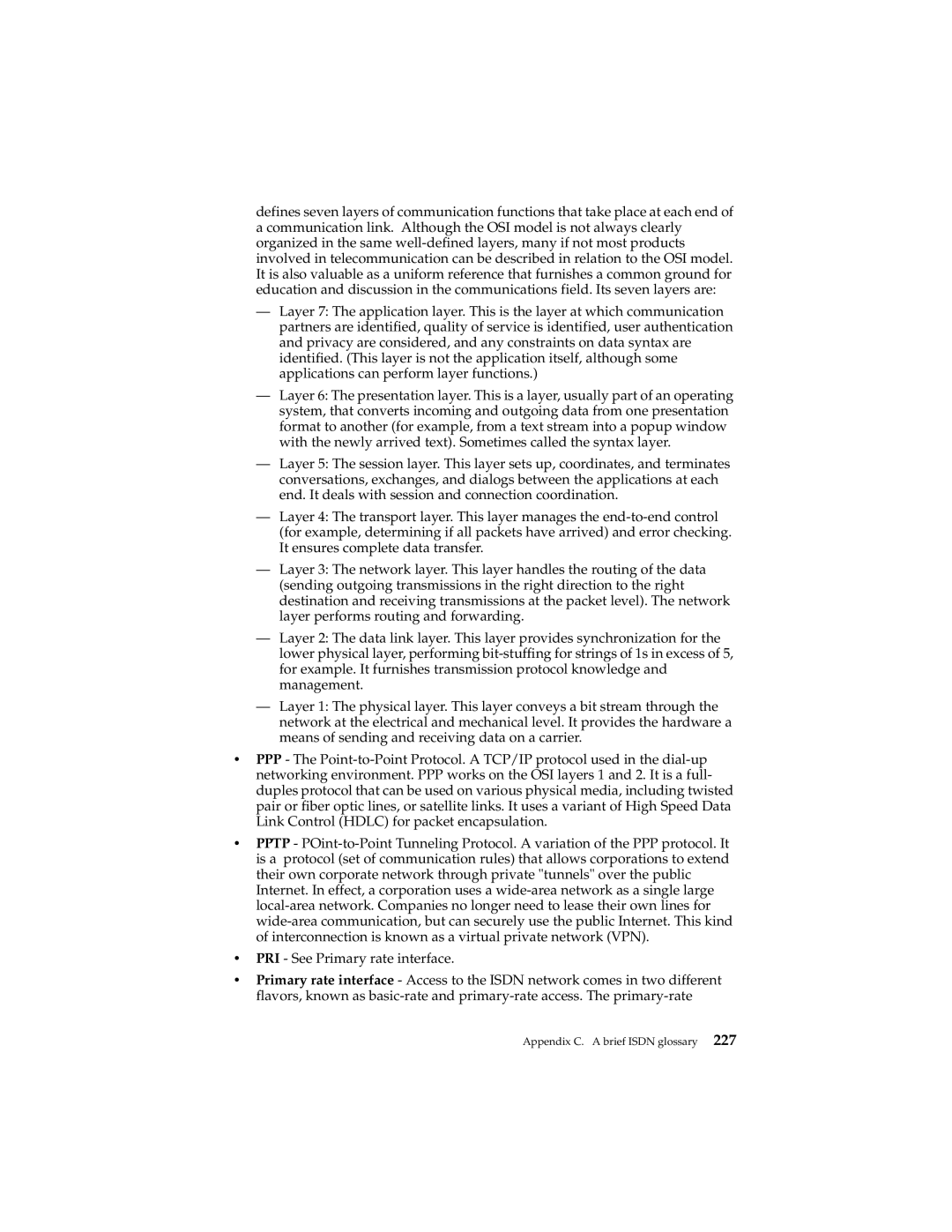defines seven layers of communication functions that take place at each end of a communication link. Although the OSI model is not always clearly organized in the same
—Layer 7: The application layer. This is the layer at which communication partners are identified, quality of service is identified, user authentication and privacy are considered, and any constraints on data syntax are identified. (This layer is not the application itself, although some applications can perform layer functions.)
—Layer 6: The presentation layer. This is a layer, usually part of an operating system, that converts incoming and outgoing data from one presentation format to another (for example, from a text stream into a popup window with the newly arrived text). Sometimes called the syntax layer.
—Layer 5: The session layer. This layer sets up, coordinates, and terminates conversations, exchanges, and dialogs between the applications at each end. It deals with session and connection coordination.
—Layer 4: The transport layer. This layer manages the
—Layer 3: The network layer. This layer handles the routing of the data (sending outgoing transmissions in the right direction to the right destination and receiving transmissions at the packet level). The network layer performs routing and forwarding.
—Layer 2: The data link layer. This layer provides synchronization for the lower physical layer, performing
—Layer 1: The physical layer. This layer conveys a bit stream through the network at the electrical and mechanical level. It provides the hardware a means of sending and receiving data on a carrier.
•PPP - The
•PPTP -
•PRI - See Primary rate interface.
•Primary rate interface - Access to the ISDN network comes in two different flavors, known as
